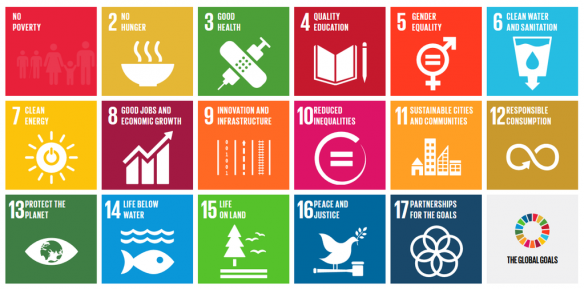The UN’s new Sustainable Development Goals are ready for adoption. For the first time, the UN will measure the incidence of one of the most controversial, but important, development indicators: the amount of armed conflict in the world.
 On 25 September this year, a UN summit will adopt the new Sustainable Development Goals. These will replace the Millennium Development Goals dating from 2000, which expire this year.
On 25 September this year, a UN summit will adopt the new Sustainable Development Goals. These will replace the Millennium Development Goals dating from 2000, which expire this year.
Originally Norway pressed for the Millennium Development Goals to include the goal of a more peaceful society. This turned out to be too controversial. Several countries feared that such a goal would legitimize interference by the UN in countries’ internal affairs.
Since 2000, however, it has become increasingly difficult to deny the clear connection between armed conflict and underdevelopment. The major breakthrough came in 2011, when the World Bank’s World Development Report addressed war and development. The report, whose contributors included PRIO and several other Norwegian research institutions, confirmed that war is development in reverse.
Among the 17 Sustainable Development Goals to be adopted in New York is Goal 16: To promote peaceful and inclusive societies for sustainable development, provide access to justice for all and build effective, accountable and inclusive institutions at all levels.
It is high time for such a goal. Every year for the last 15 years between 25 and 30 countries have seen civil conflict worldwide. Many of these armed conflicts are in the world’s poorest countries.
The number of conflicts worldwide is increasing, according to the Uppsala Conflict Data Program (UCDP). There were 40 active armed conflicts in 2014, six more than in 2013. These conflicts are also more violent than has been the case for a long time. The UCDP reports that for the first time since the end of the Cold War, over 100,000 deaths in armed conflicts have been recorded in a single year.
These conflicts are both a cause and a result of a lack of social and economic development. James Fearon and David Laitin at Stanford University have calculated that a doubling of per capita income in the poorest countries would on average reduce the probability of conflict by around 30%. Alternatively, a single year of average civil war will reduce a country’s economic growth by around 2 percentage points. The consequences of conflict are not limited, however, to the economy. In a study conducted by researchers at PRIO, we find that conflict affects infant mortality – for every person killed in conflict, a newborn infant that otherwise would have survived will also die.
In addition, an average civil war that kills 2,500 people in the course of five years will increase the proportion of undernourished people in the population by 3.3 percentage points; reduce life expectancy by one year; increase infant mortality by 10%; and increase the number of people without access to clean drinking water and adequate sanitary facilities by 2%.
Research has shown that countries may become trapped in a vicious cycle of conflict and poverty. Conflicts are caused by a number of factors that are closely associated with poverty, and in turn conflict hinders development and intensifies and consolidates existing poverty. Many countries are dependent upon help from international society in order to break out of this type of negative spiral.
Some societies are surprisingly adaptable. Certain countries have experienced continued improvement in health and education during conflict. This is due, among other things, to the fact that international organizations are often successful in reaching vulnerable groups in the population. Other countries, such as Rwanda, have seen impressive economic growth in the wake of conflict. Such examples illustrate that it is in fact possible to reduce the generally negative impact of conflict on development, but they stand in sharp contrast to the example of countries such as the Democratic Republic of the Congo (DRC), which in recent decades has experienced only a few intermittent years of peace amidst recurrent conflicts.
We still know too little about what factors determine whether a country ends up like Rwanda, and manages to get back on its feet after conflict, or if it ends up like the DRC, which is caught in a vicious cycle of conflict and underdevelopment. Here international society needs to invest in generating more knowledge, in gathering data, and in researching tools for conflict reduction that could be effective.
We already know, however, that the deployment of peacekeeping forces under the auspices of the UN both reduces the intensity of conflicts and shortens their duration. Accordingly, if international society is to succeed in fostering development, a first step must be to invest more in peacekeeping forces. Here Norway can play a leading role in the struggle to reverse the decline in funding for peacekeeping. Reversing this trend will be decisive if the Sustainable Development Goals are to be more than wishful thinking by the world’s leaders.
- This text was published in Norwegian in Dagens Næringsliv 24 Sep 2015: “Krig er utvikling i revers“.
- Translation from Norwegian: Fidotext